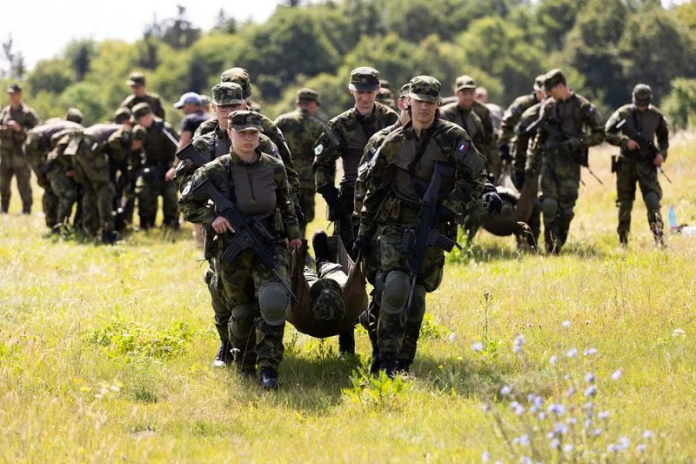About 80 Czech high school students decided to spend part of their summer learning about army life as part of a four-week training programme held in a closed military zone near Prague, according to Reuters.
General Karel Rehka, the Czech military commander, described the current system as unsustainable. He stated that a programme run by the 4th Rapid Deployment Brigade, an army unit operating at only 50 per cent of its capacity due to a shortage of soldiers, allowed students to experience army life.
We want to deter any potential adversary in the future. If we don’t do anything about the lack of human resources in the military…, it may mean that we won’t be able to preserve our peace and to deter any potential enemy.
The Czechs reached 56 per cent of their recruitment target in 2021, rising to 85 per cent in 2022, according to the latest army figures. However, Eastern European countries are still struggling to recruit new soldiers and retain experienced ones in a region where Poland, Hungary, Romania, and Slovakia border Ukraine.
We cannot do anything without people – if we modernise equipment and don’t have enough competent people and motivated people, that is all wasted money.
Common issue
Western European countries that are members of NATO face similar challenges. Reuters reported in July that NATO would need between 35 and 50 additional brigades to fully implement its new plans to defend against any perceived attack on alliance territory.
Governments resorted to digital marketing campaigns, increased recruitment bonuses, and considered various options, including a decree by the Czech defence ministry, which came into effect on September 1, to reduce medical requirements for regular military personnel, reservists, and new recruits.
However, with low unemployment in Eastern Europe, the main challenge is convincing young men to join the army for less money than they can earn in the private sector, according to Major General Karol Dymanowski, First Deputy Chief of the General Staff of Poland’s armed forces.
We have challenges. They are related to the fact that the labour market here is very competitive.
In Poland, government and military officials say they are meeting recruitment targets with plans to increase recruitment limits. Critics, however, question whether the goal of creating an army of 300,000 soldiers is realistic. But defence ministry figures show that while the number of recruits has risen, according to the latest available data, a whopping 9,000 professional soldiers left the service in 2023.
Warsaw is also looking to increase defence spending to nearly 5% of GDP and recently launched a campaign called “Holidays with the Army.” It provides basic military training for citizens aged 18 to 35 for 28 days.
The Hungarian Armed Forces, which has not published updated conscription figures, has launched a campaign to find new soldiers through billboards, advertisements, and a military-themed TV series to be aired by the end of 2024.
Meanwhile, the Romanian government launched a conscription drive after the latest defence ministry figures showed that 43 percent of officer positions remained unfilled, as well as 23 percent of soldier and other professional positions. Romania has four Patriot missile defence batteries, but only two are operational. The government also purchased several F-16 fighter jets but did not have enough trained pilots to operate them.
One must look at what laws need to be changed, not only in Romania but in other countries, to incentivise these people (serving soldiers) to stay.
Romania and other countries are pinning their hopes on a new generation of soldiers who accept plans to join the army after finishing school.
